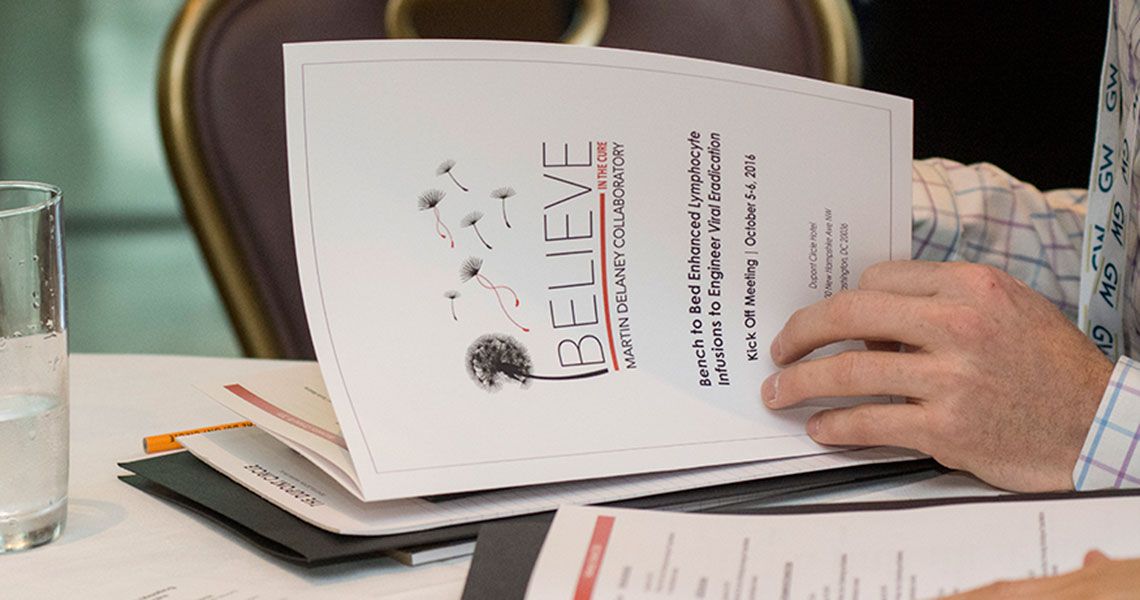Nearly 100 attendees from North and South America gathered at The Dupont Circle Hotel in northwest Washington, D.C. for the kick-off meeting of BELIEVE, the National Institutes of Health Martin Delaney Collaboratory (MDC) grant, designed to foster partnerships between institutions and corporations to fast-track HIV/AIDS research.
“We are excited to really get cracking and get our science into a place where we can participate in work with our community,” said MDC Primary Investigator Douglas Nixon, M.D., Ph.D., chair of the Department of Microbiology, Immunology, and Tropical Medicine and Walter G. Ross Professor of Basic Science Research at the GW School of Medicine and Health Sciences (SMHS).
The focus of the multimillion-dollar grant, and the basis of the acronym BELIEVE, is to translate research from the bench to the bedside by enhancing lymphocytes, or immune cells, and placing them in patients to eradicate HIV infection (“Bench to Bed Enhanced Lymphocyte Infusions to Engineer Viral Eradication”). The BELIEVE research team, led by SMHS, includes 18 institutions and two private companies, Altor Bioscience Corporation and Torque Therapeutics; representatives from all were present at the Oct. 5 and 6 meetings.
“Those of you who have been in a collaboratory know that [this is] an opportunity to hear a lot of each other’s voices,” Nixon said. “Communication is key.”
At the first of what will be regular meetings spread over the term of the five-year grant, attendees heard about the various aspects of BELIEVE — such as planning, project timelines, and scientific objectives.
Critical to the program are the four initial research foci (IRF), which constituted the bulk of the two-day event’s presentations. The IRF include: harnessing natural and engineered CTLs (cytotoxic T-lymphocytes) to eradicate HIV reservoirs; combining natural killer cells and bnAbs (broadly neutralizing antibodies) to target ADCC (antibody-dependent cell-mediated cytotoxicity) against the viral reservoir; directing immune effectors to viral sanctuaries in lymphoid tissues; and combining T-cell therapy with an IL-15 superagonist to target HIV reservoirs in patients.
In addition to the IRF, the meeting focused on community engagement, a critical component of the grant. The goal, Nixon explained, is to work with the D.C. public through community advisory boards to ensure relationships between the researchers and those living with HIV – who might be eligible to participate in clinical trials through the BELIEVE grant – remain positive.
“We have a vision and a mission, and we want to do something that’s good for people,” Nixon said. “We want to push to remember to keep to that path.”



